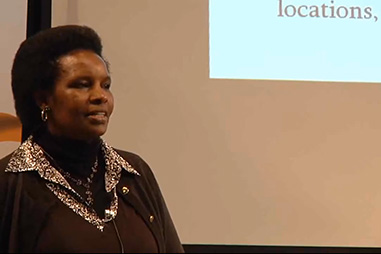This is an old story, yet an interesting one. According to the Economist, the European map is outdated and illogical. Here’s how it should look:
And here’s the rationale:
People who find their neighbours tiresome can move to another neighbourhood, whereas countries can’t. But suppose they could. Rejigging the map of Europe would make life more logical and friendlier.
Britain, which after its general election will have to confront its dire public finances, should move closer to the southern-European countries that find themselves in a similar position. It could be towed to a new position near the Azores. (If the journey proves a bumpy one, it might be a good opportunity to make Wales and Scotland into separate islands).
In Britain’s place should come Poland, which has suffered quite enough in its location between Russia and Germany and deserves a chance to enjoy the bracing winds of the North Atlantic and the security of sea water between it and any potential invaders.
Belgium’s incomprehensible Flemish-French language squabbles (which have just brought down a government) are redolent of central Europe at its worst, especially the nonsenses Slovakia thinks up for its Hungarian-speaking ethnic minority. So Belgium should swap places with the Czech Republic. The stolid, well-organised Czechs would get on splendidly with their new Dutch neighbours, and vice versa. Belarus, currently landlocked and trying to wriggle out from under Russia’s thumb, would benefit greatly from exposure to the Nordic region, whose influence played a big role in helping the Baltics shed their Soviet legacy. So it should move northwards to the Baltic, taking the place of Estonia, Latvia and Lithuania. These three countries should move to a new location somewhere near Ireland. Like the Emerald Isle, they have bitten the bullet of “internal devaluation”, regaining competitiveness by cutting wages and prices, rather than taking the easy option of depreciating the currency, or borrowing recklessly as Greece has. The Baltics would also be glad to be farther away from Russia and closer to America. Amid the other moves, Kaliningrad could shift up the coast towards Russia, ending its anomalous status as a legacy exclave of the second world war and removing any possibility of future Russian mischief-making about rail transit.
Into the slots vacated by Poland and Belarus should come the western and central parts of Ukraine. Germany, with the Ukrainian border now only 100km from Berlin, would start having to take the country’s European integration seriously. The Ukrainian shift would allow Russia to move west and south too, thus vacating Siberia for the Chinese, who will take it sooner or later anyway.
Next comes some reordering of the Balkans. Macedonia, Albania and Kosovo should rotate places, with Macedonia taking Kosovo’s place next to Serbia, Kosovo moving to Albania’s slot on the coast, and Albania shifting inland. Paranoid Greek fantasies about territorial claims from the deluded Slav irredentists from the north would evaporate. Bosnia is too fragile to move and will have to stay where it is.
Switzerland and Sweden are often confused. So it would make sense to move Switzerland north, where it would fit neatly into the Nordic countries. Its neutrality would go down well with the Finns and Swedes; Norway would be glad to have another non-EU country next door.
Germany can stay where it is, as can France. But Austria could shift westwards into Switzerland’s place, making room for Slovenia and Croatia to move north-west too.* They could join northern Italy in a new regional alliance (ideally it would run by a Doge, from Venice). The rest of Italy, from Rome downwards, would separate and join with Sicily to form a new country, officially called the Kingdom of Two Sicilies (but nicknamed Bordello). It could form a currency union with Greece, but nobody else.
[Source]





